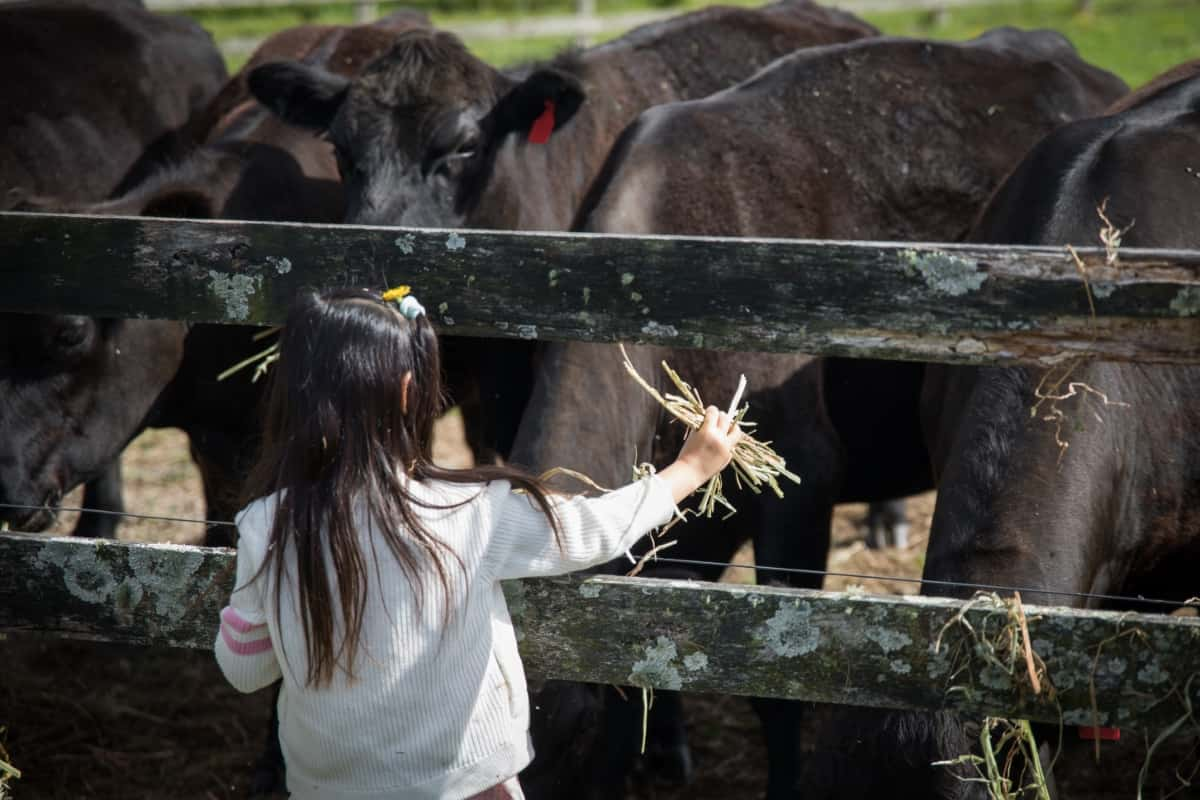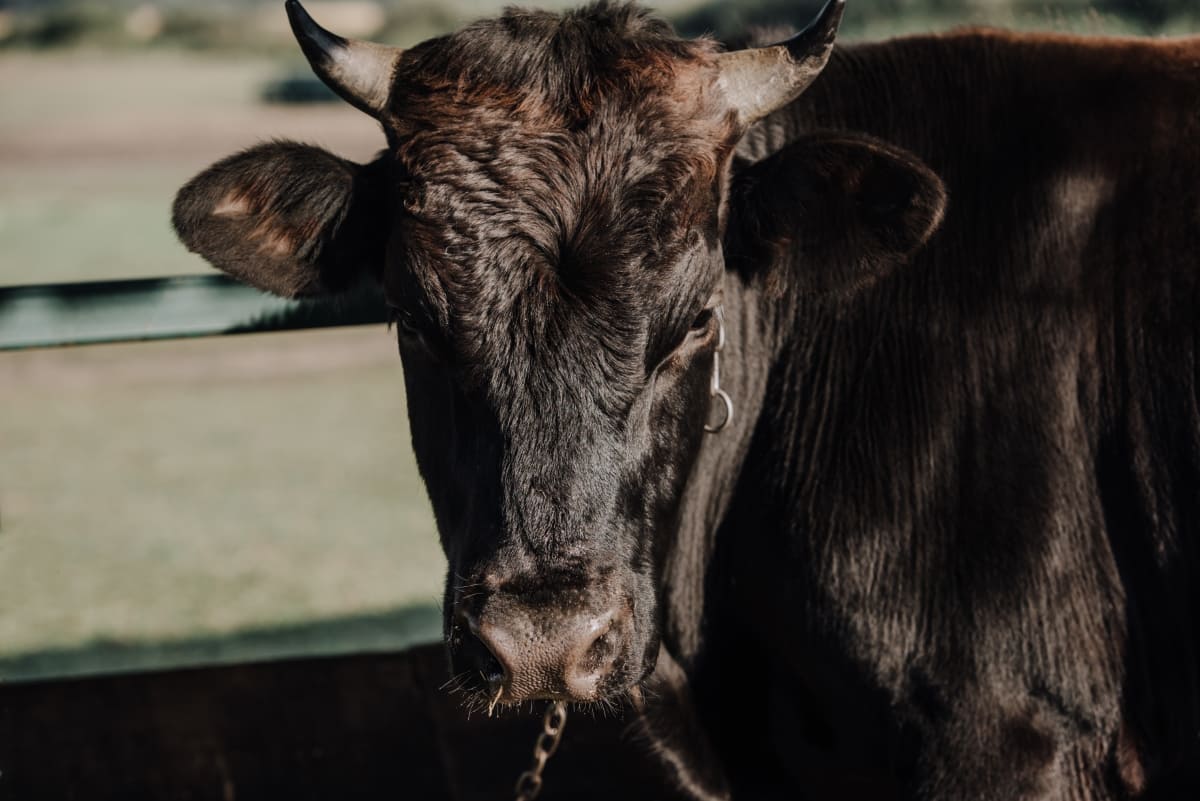Raising Wagyu cattle requires dedication, knowledge of breed-specific practices, attention to detail at every stage of production – from breeding selection all the way through marketing -and a willingness to learn about advancements in this specialized field continuously. By knowing the Wagyu cattle raising guide and with perseverance and commitment, you can experience great success while reaping both financial rewards and personal satisfaction from raising these prized animals on your farm.

Introduction to Wagyu Cattle
Breed Origin and History
Wagyu cattle, known for their exceptional marbling and melt-in-your-mouth tenderness, have a rich history that dates back centuries. The origin of Wagyu cattle is Japan, these prized animals were first bred for agricultural purposes.
Breed Characteristics
What sets Wagyu apart from other breeds is their unique genetic predisposition for higher intramuscular fat content. This results in the famous marbling that gives their meat its buttery texture and distinctive flavor. It’s no wonder Wagyu beef is highly sought after by discerning chefs and food enthusiasts around the world.
Wagyu Cattle Price
When it comes to pricing, expect to pay a premium for genuine Wagyu cattle due to their rarity and superior quality. Wagyu Cattle prices can vary depending on factors such as age, genetics, and bloodline purity.
Wagyu Cattle Size, Weight, and Height
In terms of size, weight, and height, Wagyu Cattle weight of adult males typically weigh between 1,800-2,200 pounds (816-998 kg), while females average around 1,300-1,600 pounds (590-725 kg). When it comes to Wagyu Cattle height, as for height measurements at the shoulder or withers point – males reach an average of 59 inches (150 cm) while females stand at approximately 55 inches (140 cm).
Wagyu Cattle Lifespan
Wagyu cattle also boast an impressive lifespan compared to other beef breeds. On average Wagyu Cattle lifespan is between 8-12 years when properly cared for. This longevity allows farmers ample time to develop high-quality breeding stock and maximize the potential of their herds.
Starting with Wagyu Cattle
Selecting Breeding Stock
When it comes to starting your journey with Wagyu cattle, selecting the right breeding stock is crucial. These animals are known for their exceptional genetics and marbling capabilities, so you want to ensure that you choose high-quality individuals. Look for registered breeders who have a track record of producing top-notch Wagyu cattle.
Costs and Investment
When it comes to the Cost of raising Wagyu cattle, it’s important to note that getting started in the Wagyu industry can be quite expensive. The initial investment includes purchasing breeding stock, land for grazing, equipment, and infrastructure like fencing and shelters. Additionally, there will be ongoing expenses such as feed, veterinary care, and marketing. While the upfront costs may seem daunting at first glance, it’s essential to consider the potential returns on your investment. By targeting premium markets and establishing a strong brand presence, you can command higher prices for your product.
Feeding/Diet and Nutrition
Grass-Fed vs. Grain-Fed
When it comes to Wagyu Cattle diet, there are different approaches you can take. Grass-fed Wagyu feeding practices are typically seen as more natural and traditional for cattle. They involve grazing on pasture, allowing the animals to consume a variety of grasses and plants. This can result in beef that has a distinct flavor profile and a leaner texture.
On the other hand, the Grain-fed Wagyu diet benefits are to enhance marbling in Wagyu beef. Marbling refers to the intramuscular fat that gives Wagyu its renowned tenderness, juiciness, and flavor. By feeding them a specialized diet high in grains such as corn or barley during the finishing phase before slaughter, producers aim to achieve optimal marbling.
Specialized Diets for Marbling
In addition to these two options, some farmers may opt for specialized diets specifically designed to maximize the marbling potential in their Wagyu cattle. These diets often include a combination of grains along with additional supplements like soybean meal or flaxseed oil.
In case you missed it: How to Raise South Devon Cattle: Guide to Breed Profile and Farming Practices

Housing and Environment
Creating a Stress-Free Environment
These gentle creatures thrive in calm and peaceful surroundings. To create a stress-free environment, start by ensuring that the housing facilities are comfortable and spacious enough for the cattle to move around freely. Adequate ventilation is also essential to maintain good air quality within the barns or shelters.
Pasture Management
Wagyu cattle pasture management plays a significant role in providing proper grazing opportunities for Wagyu cattle. Regular monitoring of pastures ensures that they are not overgrazed or lacking in essential nutrients. By rotating pastures, you can prevent soil erosion while allowing grasses to regenerate naturally. Adding shade structures or trees in the pasture area protects against extreme weather conditions such as heatwaves or heavy rainfall. This way, your Wagyu cattle have access to both shelter and an open space where they can roam freely.
Health and Welfare
Routine Health Checks
Ensuring the Health care for Wagyu cattle is crucial for their overall well-being and productivity. Regular health checks are essential to catch any potential issues early on. It’s recommended to work closely with a veterinarian who specializes in cattle to develop a comprehensive health care plan.
Routine health checks should include examinations of body condition, hoof health, dental care, and parasite control. Vaccinations against common diseases such as respiratory infections and clostridial diseases should also be administered according to a schedule that aligns with your specific region.
Stress Management
Cattle can experience stress from various factors, including environmental changes, handling procedures, or even social interactions within the herd. Minimizing stressors through proper handling techniques can go a long way in promoting better overall animal welfare. Creating low-stress environments by providing ample space for movement, clean water sources, shade during hot weather conditions, and protection from extreme weather events will help keep your Wagyu cattle comfortable and content.
Breeding and Genetics
Understanding Wagyu Genetics
When it comes to raising Wagyu cattle, understanding their genetics is crucial. These prized animals have a unique genetic makeup that contributes to their marbling and flavor. Wagyu cattle are known for having a high percentage of intramuscular fat or marbling. Breeders aim to select animals with favorable variations in these genes through careful Wagyu genetic breeding programs.
Breeding Programs
To ensure successful breeding, it’s essential to establish clear goals and objectives. Breeders must determine which traits they want to improve or maintain in their herd. This can include not only marbling but also Monitoring Wagyu cattle growth, body conformation, fertility, and temperament. Understanding heritability is another crucial aspect of breeding Wagyu cattle. Some traits have higher heritability than others; for example, marbling has moderate heritability compared to other Wagyu Cattle characteristics like size or weight gain.
Growth and Development
Monitoring Growth Rates
Growth and development are crucial components when it comes to raising Wagyu cattle. As a farmer, it’s important to monitor the growth rates of your cattle closely. By doing so, you can ensure they are progressing as expected and identify any potential issues early on. One key aspect of monitoring growth rates is keeping track of the animals’ weight gain over time. This can be done by regularly weighing the cattle and recording their progress.
Achieving Optimal Marbling
Achieving optimal marbling is another vital factor in raising Wagyu cattle. Marbling enhancement in Wagyu beef refers to the intramuscular fat that gives Wagyu beef its signature tenderness and flavor. To achieve this, farmers often implement specialized feeding programs that focus on high-energy diets for the animals.
In case you missed it: How to Prepare Cattle Feed at Home: DIY Procedure

These diets typically consist of a combination of grain-based feeds and forages rich in nutrients. The goal is to promote muscle development while encouraging fat deposition within the muscles themselves, leading to that coveted marbling effect.
Marketing and Selling Wagyu Beef
Targeting Premium Markets
When it comes to Marketing premium Wagyu beef, targeting premium markets is key. After all, this highly prized meat deserves a clientele that appreciates its exceptional quality and flavor. Creating a strong brand identity for your Wagyu beef is essential. Think sleek designs, elegant fonts, and attention to detail. This will help create an image of exclusivity and luxury in the minds of potential customers.
Branding and Promotion
Promotion plays a crucial role in reaching your target market. Utilize various marketing channels such as social media platforms, food festivals, gourmet events, and partnerships with restaurants or specialty shops catering to discerning consumers. Highlight the superior marbling, tenderness, and melt-in-your-mouth texture of your Wagyu beef through visually appealing images or videos that showcase its succulent qualities.
Sustainability Practices
Eco-Friendly Farming Techniques
Sustainable Wagyu farming techniques are becoming increasingly important in the agricultural industry. One effective technique is rotational grazing, where cattle are moved regularly between different pastures. This allows for optimal utilization of grass and prevents overgrazing in one area, promoting healthier soil and reducing erosion. Additionally, incorporating cover crops into your grazing system helps increase soil fertility by adding organic matter and preventing nutrient runoff.
Silvopasture and Regenerative Agriculture
One such practice is silvopasture, which involves integrating trees and livestock grazing. By strategically planting trees in pastures or creating wooded areas for shade and shelter, we can create a more diverse ecosystem that benefits both cattle and the environment. The trees provide shade during hot summer months, reduce soil erosion, and sequester carbon dioxide from the atmosphere.
Regenerative agriculture goes beyond simply sustaining current practices; it aims to improve soil health and biodiversity over time. Through practices like rotational grazing, cover cropping, and minimal use of chemicals or artificial fertilizers, farmers can restore degraded land while producing high-quality beef.
In case you missed it: Cattle Breeding Calendar: Cattle Gestation Stages and Cattle Gestation Table

Conclusion
Raising Wagyu cattle can be a rewarding and lucrative venture for farmers who are willing to put in the time and effort. These unique Japanese cattle have become highly sought after for their exceptional meat quality, particularly their marbling, which is coveted by chefs and consumers alike.
Note: The images presented in this post are intended solely for representation purposes. The images are meant to serve as visual aids and should not be relied upon as accurate representations of their real-life counterparts.
- Feed Your Flock for Less: Top 10 Tips to Save on Chicken Feed
- Ultimate Guide to Ossabaw Island Hog: Breeding, Raising, Diet, and Care
- Hatching Answers: The Top 10 Reasons Your Chickens Aren’t Laying Eggs
- Eggs and Economics: Breaking Down the Cost of Raising Backyard Chickens
- Defend Your Greens: Proven Methods to Keep Iguanas Out of Your Garden
- Ultimate Guide to Cinnamon Queen Chicken: A Comprehensive Guide for Beginners
- Ultimate Guide to California Tan Chicken: Breeding, Raising, Diet, Egg-Production and Care
- Ultimate Guide to Marsh Daisy Chicken: Breeding, Raising, Diet, and Care
- 10 Types of Chicken Farming Businesses You Can Start for Profits